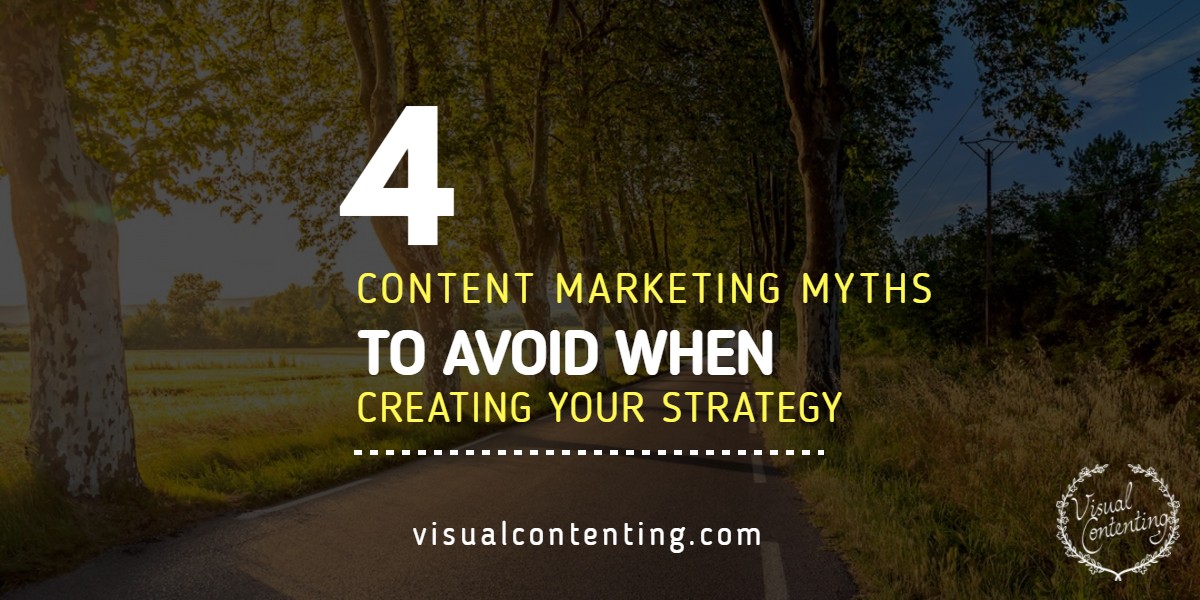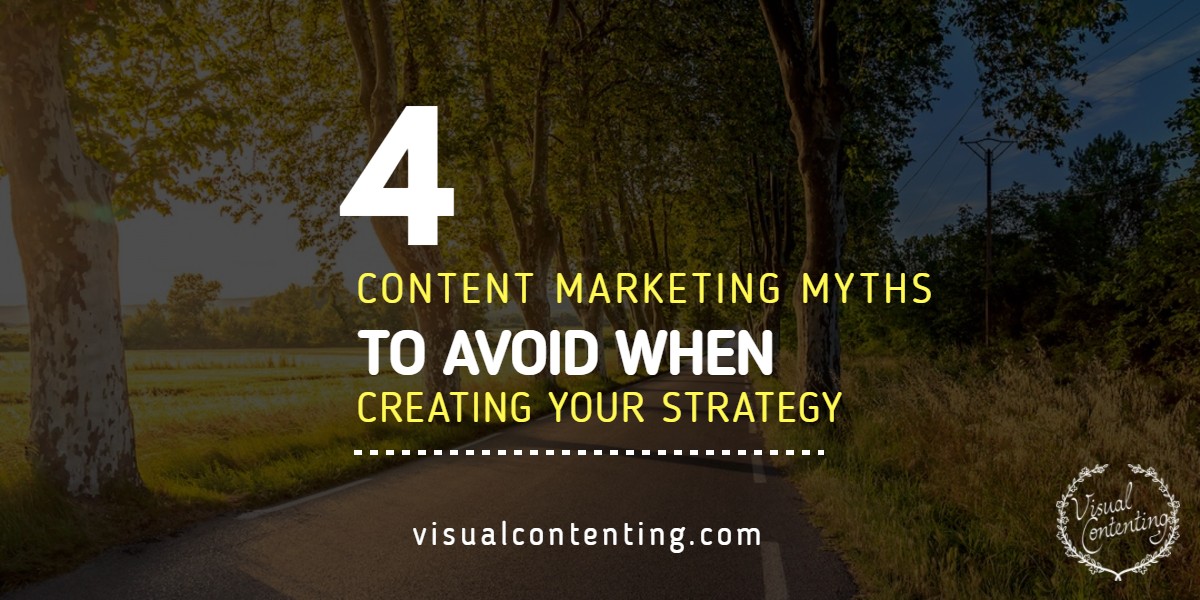When it comes time to create a content marketing strategy, who knows what you’ll read on the internet about what steps you should take. Much of the information you’ll find will be helpful, but not all of it. These are the content marketing myths you need to beware of.
Myth No. 1: My Global SEO Strategy Needs to Line up with My Product/Service Keywords.
Many people still dive into a content marketing strategy with a list of topics with keywords related to their products and services. Once upon a time, this was the way to go, as it made your website keyword-heavy, signaling to the search engines, “hey, look over here, this is where red striped socks are.” Google algorithms are much more intelligent now.
Your up-to-date SEO strategy needs to line up with the problems that your products solve, not necessarily the products and services that you offer. So, rather than trying to rank for your product or service, try to think like one of your customers. This is how it works:
Imagine that you sell clove oil. Allegedly, your product helps with the pain of a toothache. This means that your target customer is someone with a toothache. What type of search will eventually lead someone back to your clove oil product page? Will people search for, “5 ml clove oil,” or will they search for, “how to cure a toothache.” The natural wording of the latter search phrase is more likely to be used by your target audience; search engines already know this.
So, though tools like Google Keyword Planner are helpful in helping you determine which search terms have high search volume and low competition, it’s more important to provide value for your audience than to calculate the best search phrases based on your competitor's website and your product or service offering. Think outside the box when generating your SEO strategy. Provide valuable solutions to your target audience. Don’t spam people with your products.
Myth No. 2: Content Marketing Is Cheap
Content marketing, in comparison to other promotional tactics, is not expensive. As a matter of fact, content marketing is the most cost-effective brand-building method. But, that doesn’t mean it’s “cheap.” On the contrary, you have to be willing to invest in your content strategy if you want success.
In a nutshell, here’s what a solid content marketing strategy includes:
- Research - Who is your target audience, where are they online, and what do they want?
- Goal-setting - What do you want to gain from your content strategy (think in measurable terms)
- Strategy creation - How will you simultaneously appeal to your audience and reach your goals?
- Implementation - What content will you create? Where and how frequently will you publish new blog posts, YouTube videos, and social media posts?
- Analysis - What systems will you use for A/B testing, traffic monitoring, and customer relationship management?
- Adjustments - Based on your analytics and reports, what can you do to periodically improve your tactics and how often will you make changes?
Ideally, you will have at least one person - a specialist - in charge of each facet of your content strategy. You can contract individual freelancers, an agency, or hire staff to take on the roles needed. In some cases, you can launch a content strategy on your own, but as your business grows, you will exceed with a larger, more advanced team. Either way, if you choose to implement a serious content marketing plan, be ready to invest time, effort, and money.
Myth No. 3: You Should Outsource Content Creation to Save Money
Everywhere you look, you read advice to outsource; you learn that it saves money. Outsourcing isn’t a bad idea, but your primary goal shouldn’t be to save money - it should be to provide immense value. So, rather than contracting out the work to save money, bring content creators onto your team that have sophisticated expertise.
Where will you find the right people for the job? As stated above, freelancers, agencies, and employees are great options for hiring new teammates. Here is a list of places where you can find content marketing professionals to contribute to your project:
- Craigslist - Yes, people still use Craigslist to hire, and many professionals are using this platform to discover both permanent employment and short-term gigs.
- UpWork - If you want to hire expert freelancers that show you their portfolio and client reviews upfront, turn to the most popular online hiring website.
- Monster - Find specialists in nearly any niche by posting a gig and description to Monster’s job board.
- LinkedIn - Turn to your own connections and their connections first on this social media hiring platform.
- Hire Writers - An article writing service can help you with an inexpensive alternative to hiring a content marketing writer.
- SEO, SMM, or Content Marketing Agency - Since SEO, SMM, and content creation are all pieces of the same puzzle, there are several types of agencies that can help you generate the strategy you need. Hire a local, national, or global agency depending on your needs.
- Current Employees - Shoot out an email blast to your employees letting them know that you’re looking to fill some new positions. You may find that you already have the team you’re looking for. If your staff doesn’t have the skillsets required, they may know people who do.
Make sure that your new team members have specialized knowledge and that you prioritize quality above cheap labor.
Myth No. 4: Your Website Design Isn’t as Important as the Content You Create
Just as SEO, SMM, Content, and Outreach are individual gears in the content marketing machine, you website is yet another. With poor design (even when your content strategy is flawless) your lead funnel is worthless. Once you acquire traffic to your site, you need to direct it toward the next step. Depending on which page a visitor lands on, you want them to take action. Website design has a profound effect on your sales funnel.
Think of your website as a journey that site visitors can take. As they move through, from page to page, eventually signing up for your newsletter, purchasing a product, and/ or picking up the phone to call you, each asset should serve a mutually-beneficial purpose - for the visitor and your company.
The leading eCommerce website themes are pre-made for optimal online sales functionality; They are responsive to mobile and PC browser viewing, include all the bells and whistles for lead conversion, and are updated periodically to maintain alignment with current best practices. Make sure that you choose a website theme that is lead generation and conversion-ready.
Conclusion
Your SEO strategy needs to parallel the problems that your products and services solve for your target audience. Content marketing is valuable, not “cheap.” Outsource content creation to the experts, not the lowest bidders. Web design is a critical element in your content marketing strategy. Remember these facts when you dive into your next content marketing strategy.









[…] Note : Le reste de cet article a été traduit automatiquement. Cliquez pour lire la traduction ou lire l’article original. […]